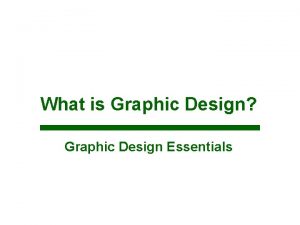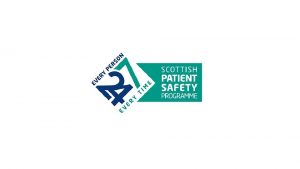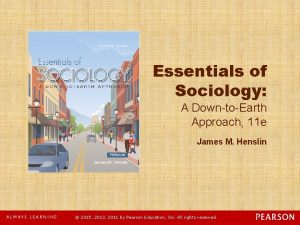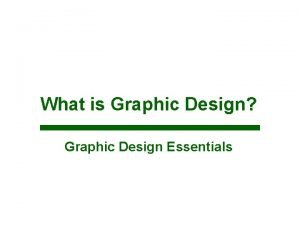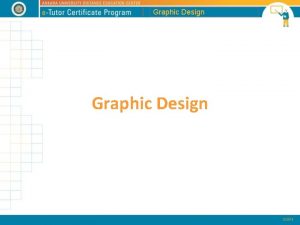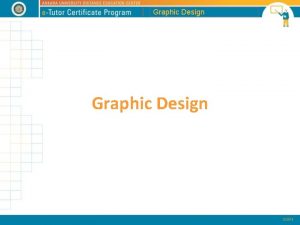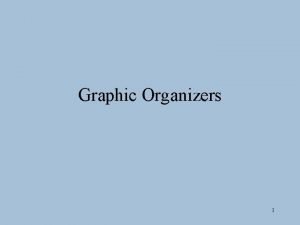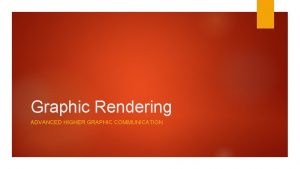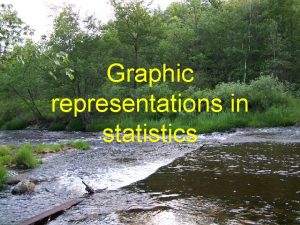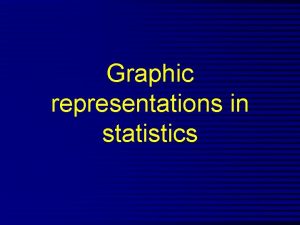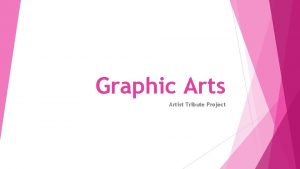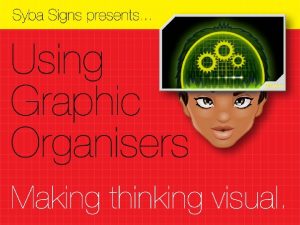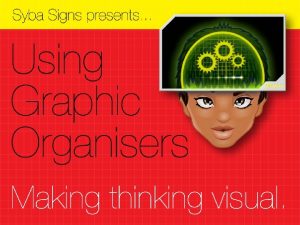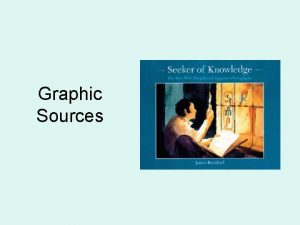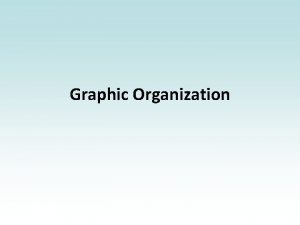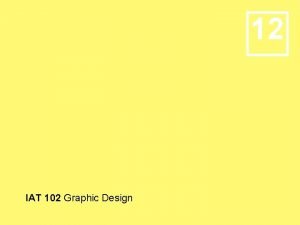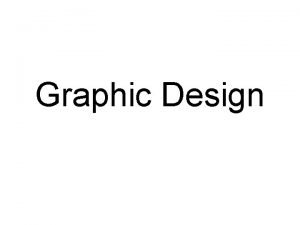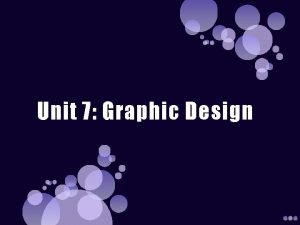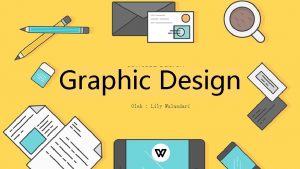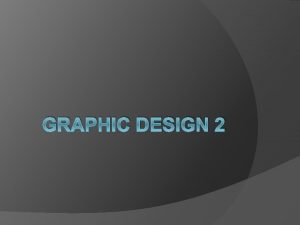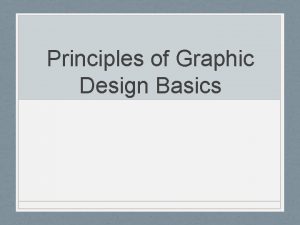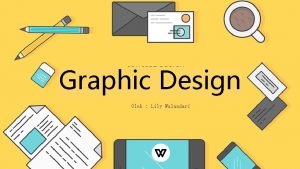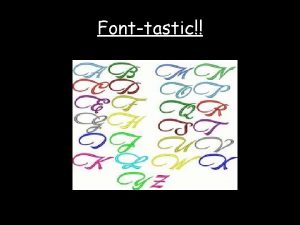What is Graphic Design Graphic Design Essentials Graphic

























- Slides: 25

What is Graphic Design? Graphic Design Essentials

Graphic Design is the business of making or choosing marks and arranging them on a surface to convey an idea.

Graphics can be: 1. Like letters of the alphabet WORDS 2. Or a pictorial sign system IMAGES

Usually words & images are used together in varying degrees

3 Main Roles of Graphic Design

1. Identification To say what something is, or where it came from (company logos, packaging and labels)

2. Information & Instruction To indicate the relationship of one thing to another in direction, position and scale (maps, diagrams, directional signs)

3. Presentation & Promotion To catch the eye and make its message memorable (posters and advertisements)

EARLIEST GRAPHIC DESIGNERS

Visual communication in its widest sense has a long history that can be traced back to prehistoric men

PRINTMAKING / MASS PRODUCTION • Printing resulted in a far more democratic distribution of knowledge, opinion, and imagery—a truly revolutionary development • Resulting in graphic art for the public

14 th Century Albrecht Dürer: 17 th Century Rembrandt Van Rijn Francisco Goya

Posters and Publications: The Art Gallery of the Street • By the second half of the 19 th century, the range of mass-produced graphic illustration had expanded to include posters, literary journals, soft covered books, advertisements and political leaflets.

18 th Century Henri Toulouse-Lautrec 19 th Century Aubrey Beardsley Alphonse Mucha

Graphic Design as a Profession As a profession, graphic design has existed only since the middle of the 20 th century, until then, advertiser’s and their agents used the services provided by commercial artists

TURN-OF-THE-CENTURY GRAPHICS • Increasing numbers of artists from the end of the nineteenth century to the present were enlisted to create advertising publicity for consumer goods, services, and institutions • At first, some of the resulting advertisement graphics followed the fine-art styles of the day added a sense of sophistication to turn-of-thecentury ads

Is Graphic Art also Fine Art? Intention Communication Approach Origin of Idea Artist Graphic Artist Self-expression Communication Poetic and personal Clear and precise One’ self From a client They are two sides of the same coin=ART

The Language of Graphic Design

Elements of art �Visual tools used to create an art �The various visual elements are the vocabulary with which the visual artist composes. These elements in the overall design usually relate to each other and to the whole art work. 1. 2. 3. 4. LINE SHAPE FORM COLOR 5. VALUE 6. SPACE 7. TEXTURE


Principles of Art 1. Balance 2. Focus/Emphasis 3. Gradation/Contrast 4. Harmony/Unity 5. Movement 6. Pattern 7. Proportion 8. Repetition 9. Rhythm 10. Variety


The NEW Elements • Computer software organizes visual material into menus properties, parameters, filters, and so on, creating tools that are universal in their descriptive power – Computer programs such as Adobe Photoshop has given us NEW DESIGN elements/universals: • Transparency • Layering

TRANSPARENCY • A condition in which two or more surfaces or substances are visible through each other – construct thematic relationships – Compositional device • Soften edges, establish emphasis, separate competing elements

LAYERING • Compositing through the ability of having different levels in one digital document
 Visual communication and graphic design essentials
Visual communication and graphic design essentials Low power design essentials
Low power design essentials Essentials of systems analysis and design
Essentials of systems analysis and design Graphic weight graphic novel definition
Graphic weight graphic novel definition Ghost graphic story graphic and wayfinding
Ghost graphic story graphic and wayfinding Small business server 2010
Small business server 2010 Windows small business server 2011 essentials
Windows small business server 2011 essentials Essentials of tort
Essentials of tort My manchester library search
My manchester library search Tres dias essentials
Tres dias essentials Essentials of safe care
Essentials of safe care 5 essentials of pay for performance
5 essentials of pay for performance Safeguarding and child protection the essentials
Safeguarding and child protection the essentials Business cloud essentials
Business cloud essentials Funnel effect criminal justice
Funnel effect criminal justice What are the essentials of valid tender
What are the essentials of valid tender William stallings network security essentials 5th edition
William stallings network security essentials 5th edition Cisco it essentials virtual desktop
Cisco it essentials virtual desktop Barracuda essentials for office 365
Barracuda essentials for office 365 It essentials chapter 8
It essentials chapter 8 Essentials of partnership act 1932
Essentials of partnership act 1932 Essentials of sociology: a down-to-earth approach
Essentials of sociology: a down-to-earth approach Essentials of migration management
Essentials of migration management What are the 10 essentials of a successful ffa chapter
What are the 10 essentials of a successful ffa chapter English essentials answer key
English essentials answer key It essential chapter 9
It essential chapter 9
